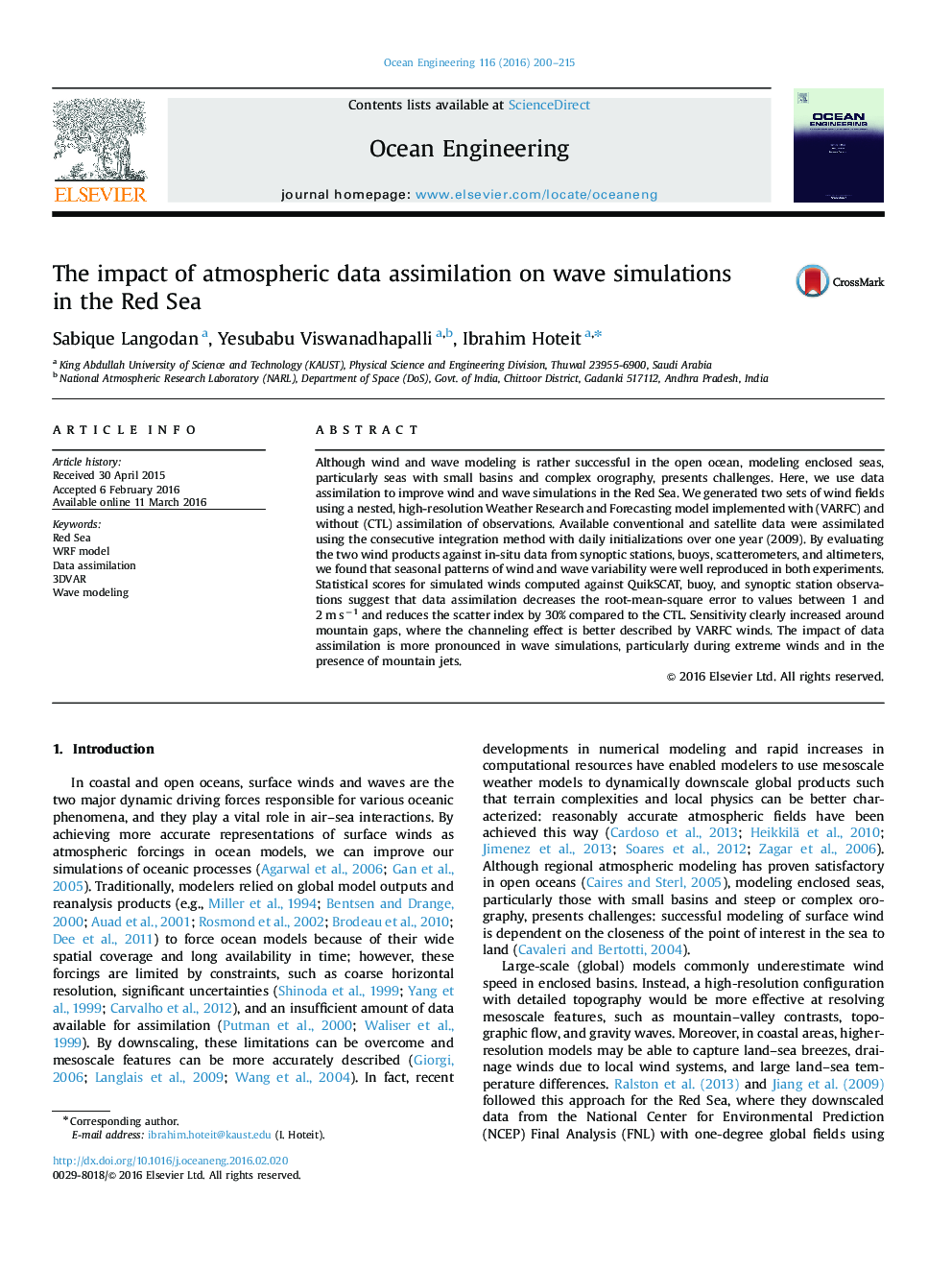| Article ID | Journal | Published Year | Pages | File Type |
|---|---|---|---|---|
| 1725145 | Ocean Engineering | 2016 | 16 Pages |
Abstract
Although wind and wave modeling is rather successful in the open ocean, modeling enclosed seas, particularly seas with small basins and complex orography, presents challenges. Here, we use data assimilation to improve wind and wave simulations in the Red Sea. We generated two sets of wind fields using a nested, high-resolution Weather Research and Forecasting model implemented with (VARFC) and without (CTL) assimilation of observations. Available conventional and satellite data were assimilated using the consecutive integration method with daily initializations over one year (2009). By evaluating the two wind products against in-situ data from synoptic stations, buoys, scatterometers, and altimeters, we found that seasonal patterns of wind and wave variability were well reproduced in both experiments. Statistical scores for simulated winds computed against QuikSCAT, buoy, and synoptic station observations suggest that data assimilation decreases the root-mean-square error to values between 1 and 2 m sâ1 and reduces the scatter index by 30% compared to the CTL. Sensitivity clearly increased around mountain gaps, where the channeling effect is better described by VARFC winds. The impact of data assimilation is more pronounced in wave simulations, particularly during extreme winds and in the presence of mountain jets.
Related Topics
Physical Sciences and Engineering
Engineering
Ocean Engineering
Authors
Sabique Langodan, Yesubabu Viswanadhapalli, Ibrahim Hoteit,
